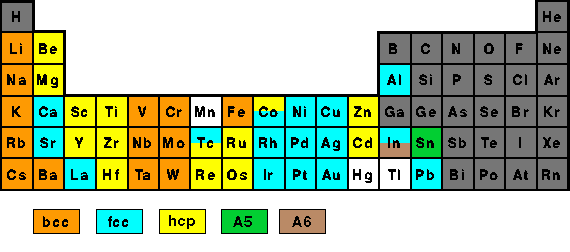![]()

Fermi surfaces, Fermi velocities and character of the electronic states at the Fermi surfaces are visualized based on ab initio electronic structure calculations within a scalar-relativistic or fully relativistic optimized LCAO scheme for the light and heavy elements, respectively [1,2]. All highlighted metals in the periodic system are available at the moment. The systems are considered in the given crystal structure. In case of multi-sheeted Fermi surfaces the sheets are presented separately. For magnetic materials majority and minority sheets are given.
Another option is the Fermi velocity of the electrons. The velocity at the Fermi surface is indicated by continuously changing colors from low velocity states (blue) to high velocity states (red).
Finally, the character of the electronic states is analyzed. For this purpose an angular momentum expansion of the Bloch functions is used. The square of the expansion coefficients is a measure for the character of the states. For zero expansion coefficients (blue) the considered angular momentum component is absent. For expansion coefficients equal to one (yellow) the considered character dominates. In between is a continuous transition.
An easy introduction to the figures is given in [3]. Numerical details of the visualization are discussed in [4].
[1] H. Eschrig, Optimized LCAO Method and the Electronic Structure of Extended Systems, Akademie-Verlag Berlin (1988)
[2] M. Richter and H. Eschrig, Solid State Communications 72, 263 (1989)
[3] C. Lehmann, Staatsexamensarbeit, TU Dresden (1997) (in German)
[4] P. Zahn, Diplomarbeit, TU Dresden (1994) (in German)
![]()
This work was done at Institut für Theoretische Physik at TU Dresden.
 by C. Lehmann, S. Sinning,
P. Zahn,
H. Wonn,
I. Mertig,
Dresden 1996-1998
by C. Lehmann, S. Sinning,
P. Zahn,
H. Wonn,
I. Mertig,
Dresden 1996-1998
technical realization by J. Bergmann († 2010), M. Zahn.